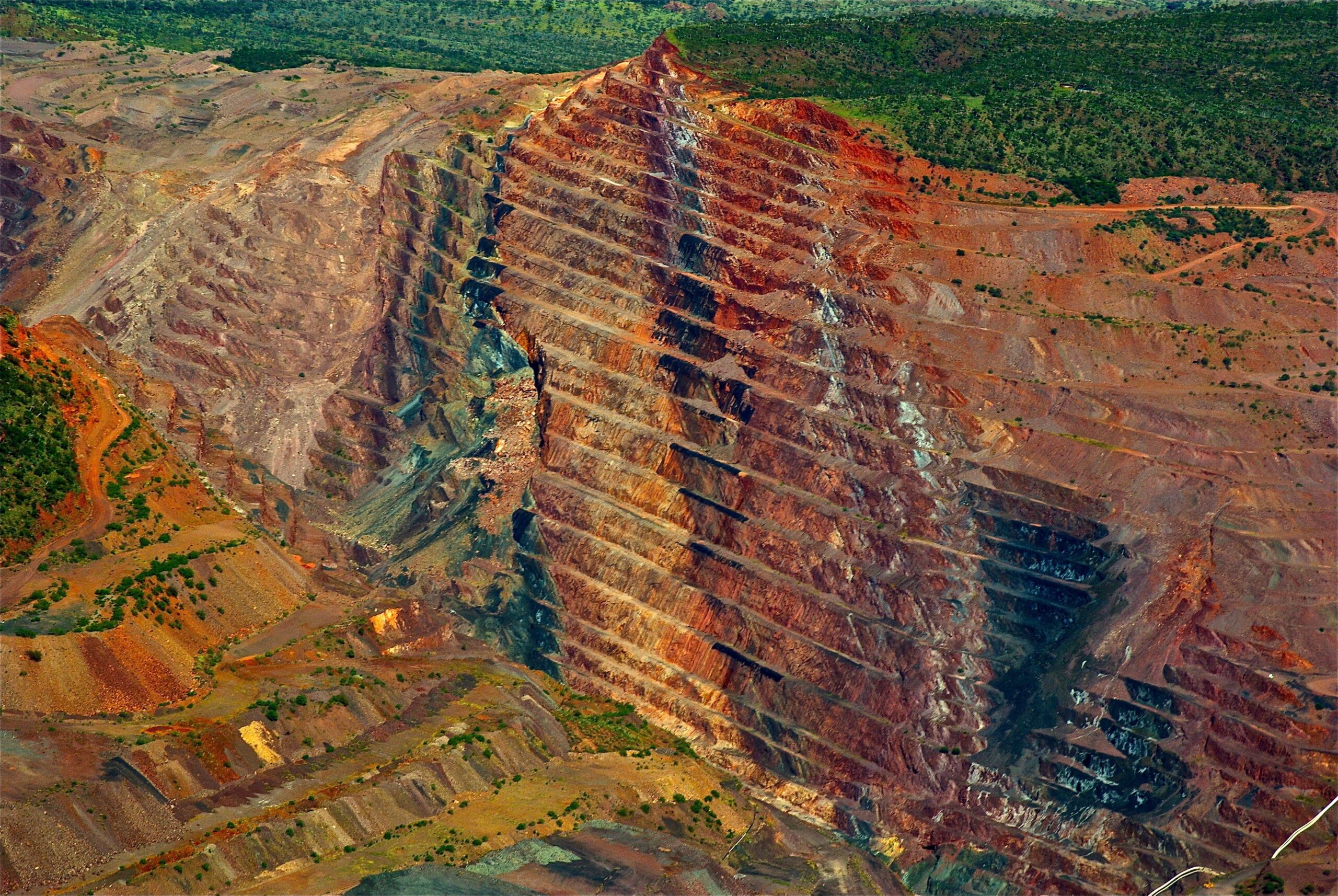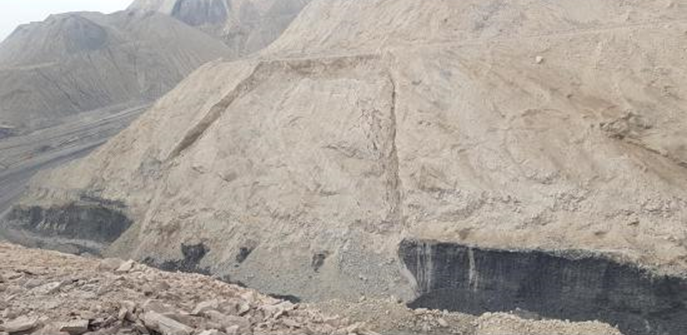Exploring the Key Factors that Control Slope Stability

As mining experts, we should understand the key factors that affect slope stability and also we should understand the importance of ensuring safe and stable slopes in open-pit mining. Slope stability is a critical aspect of any mining operation, and failure to manage it correctly can result in significant safety hazards, costly downtime, and environmental damage.
In this article, I will explore the key factors affecting slope stability in open-pit mining, from geology and weather to mining equipment and operations.
I will also examine monitoring and evaluation techniques and mitigation methods for slope instability.
Finally, I will discuss future considerations for slope stability in open-pit mining.
Introduction to Slope Stability in Open-Pit Mining
Open-pit mining involves removing rock and soil from the ground to extract valuable minerals. This process typically involves creating large open pits or excavations. This can be several hundred meters deep and several kilometers wide. Slope stability is a critical aspect of open-pit mining, as unstable slopes can lead to landslides, rockfalls, and other hazards. These hazards can endanger workers and damage equipment.
The stability of a slope depends on several factors. The factors includes the geology of the mining site, weather and climate conditions, water management, and mining equipment and operations.
Understanding the Geology of the Mining Site
The geology of the mining site is one of the primary factors affecting slope stability in open-pit mining. The type of rock and soil present at the site plays a critical role in determining the slope’s stability.
For example, some types of rock, such as shale and limestone, are more prone to weathering and erosion than others, such as granite and basalt.
The orientation of the rock layers and the presence of faults and fractures can also affect slope stability.
To assess the geology of a mining site, geologists typically conduct a series of tests and surveys, including geological mapping, rock testing, and geotechnical investigations.
This data is used to develop a detailed understanding of the rock and soil properties and to identify potential hazards, such as unstable rock formations or areas prone to landslides.
Effects of Weather and Climate on Slope Stability
Weather and climate conditions can also have a significant impact on slope stability in open-pit mining.
Heavy rainfall, for example, can increase the amount of water in the soil and rock, making them more prone to erosion and landslides. Extreme temperatures can also cause thermal stress in the rock, leading to cracking and instability.
To manage the effects of weather and climate on slope stability, mining companies typically implement a range of mitigation measures, such as slope drainage systems, erosion control measures, and monitoring programs.
These measures aim to reduce the impact of weather and climate on slope stability and to provide early warning of any potential hazards.
Importance of Water Management in Slope Stability
Water management is a critical factor in slope stability in open-pit mining. Water can weaken the soil and rock, making them more prone to erosion and landslides.
It can also increase the weight of the slope, leading to instability.
Managing water in open-pit mining involves controlling the flow of water through the site, including managing surface water runoff, groundwater, and process water.
To manage water in open-pit mining, mining companies typically implement a range of measures, such as drainage systems, dewatering systems, and water treatment plants.
These measures aim to reduce the amount of water in the soil and rock, preventing erosion and landslides and improving slope stability.
Role of Mining Equipment and Operations in Slope Stability
Mining equipment and operations can also affect slope stability in open-pit mining. Heavy equipment, such as trucks and excavators, can cause vibrations in the ground, leading to cracking and instability.
Overloading of equipment can also increase the weight of the slope, leading to instability. Mining operations, such as blasting and drilling, can also affect slope stability, depending on their location and intensity.
To minimize the impact of mining equipment and operations on slope stability, mining companies typically implement a range of measures, such as limiting the size and weight of equipment, using low-impact drilling and blasting techniques, and monitoring the impact of operations on slope stability.
Monitoring and Evaluation of Slope Stability
Monitoring and evaluation are critical aspects of managing slope stability in open-pit mining.
These monitoring programs aim to detect any changes in slope. The changes can be cracks or movement, while evaluation programs aim to assess the overall stability of the slope.
To monitor and evaluate slope stability, mining companies typically use a range of techniques. These techniques includes visual inspections, geotechnical instrumentation, and remote sensing. The most advanced and latest monitoring technology is realtiem monitoring with ground based radar. Watch this video to know about slope stability radar- https://www.youtube.com/watch?v=C3Dhciv5uBo
These techniques provide real-time data on slope stability. Real-time data enable mining companies to take action to mitigate any potential hazards. Watch this video to know more about slope monitoring- https://waartsy.com/open-pit-and-dump-slope-monitoring/
Mitigation Methods for Slope Instability
Mitigation methods are essential for managing slope instability in open-pit mining. These methods aim to reduce the risk of slope failure and protect workers and equipment.
Some common mitigation methods for slope instability include:
Slope reinforcement: This involves adding additional support to the slope, such as rock bolts or mesh, to increase its stability.
Grading: Slope grading involves reshaping the slope to reduce its steepness and improve its stability.
Drainage: Slope drainage involves installing drainage systems to control the flow of water through the slope and prevent erosion.
Slope monitoring: This involves implementing a monitoring program to detect any changes in slope stability and take action to mitigate any potential hazards.
Case Studies of Slope Stability Issues in Open-Pit Mining
In recent years, several high-profile slope stability issues have occurred in open-pit mining. For example, in 2019, a large landslide occurred at the Chuquicamata copper mine in Chile. Another huge landslide occurred at Bingham Canyon mine of Rio Tinto, causing significant damage to equipment and infrastructure.
In 2020, a similar incident occurred at the Bingham Canyon copper mine in Utah, USA, resulting in the temporary closure of the mine.
These incidents highlight the importance of managing slope stability in open-pit mining and the potential consequences of failing to do so.
They also demonstrate the value of effective monitoring and evaluation programs and mitigation measures in preventing slope instability.
Future Considerations for Slope Stability in Open-Pit Mining
As mining operations continue to expand, the importance of managing slope stability in open-pit mining will only increase.
Advances in technology, such as remote sensing and artificial intelligence, are expected to play an increasingly important role in monitoring and evaluating slope stability. At the same time, there is a growing focus on sustainability in mining, with an emphasis on reducing the environmental impact of mining operations, including managing slope stability.
Conclusion
Slope stability is a critical aspect of open-pit mining, and failure to manage it correctly can result in significant safety hazards, costly downtime, and environmental damage.
Understanding the key factors i.e. geology of the mining site, managing water, mitigating the impact of mining equipment and operations, and implementing effective monitoring and evaluation programs and mitigation measures are all critical for managing slope stability in open-pit mining. By taking a proactive approach to slope stability, mining companies can reduce the risk of slope failure and protect workers and equipment, ensuring the long-term sustainability of their operations



